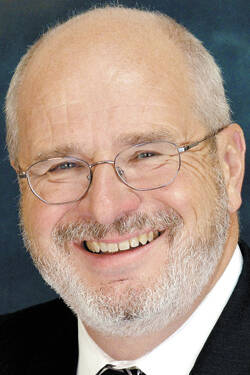The two teachers who risked their lives in school shootings say the same thing helped them decide which reporters to talk with and which ones to avoid.
A sense of basic humanity.
Melissa Falkowski and Jason Seaman came to Franklin College for the Second National Trauma Journalism Symposium, on Sept. 21 and 22. They were part of a panel discussion moderated by Linsey Davis, weekend anchor for ABC World News Tonight and anchor for ABC News Live Prime.
Falkowski is a journalism and English teacher and the advisor to the student newspaper at Marjory Stoneman Douglas High School in Parkland, Florida. On Valentine’s Day in 2018, when a disturbed former student armed with an AR-15-style rifle and multiple magazines entered the school and started shooting, Falkowski hid 19 students in a closet in her classroom.
By the time the shooter was done firing, he had killed 17 people and injured 17 others.
Falkowski and her students survived the horror. But they spent weeks afterward going to funerals. The grief and the trauma still linger.
Jason Seaman is now a biology teacher and freshman football coach at Carmel High School.
In 2018, though, he taught biology at Noblesville West Middle School. In May of that year, just three months after the mass shooting at Parkland, a student armed with two guns came into Seaman’s classroom.
The shooter put a bullet into a female student in the class and then shot Seaman. Seaman threw a mini-basketball to distract the shooter, then rushed the gun-bearing student, tackled him and pinned him to the ground—but not before Seaman sustained multiple gunshot wounds.
Fortunately, no one died, but the recovery for Seaman, the student who was shot, the school and the community has been long, hard and ongoing.
Both Falkowski and Seaman say they talk only under certain circumstances about the days when a troubled gun-toting young person brought misery into their lives and classrooms.
They both say they only will talk about the shootings with journalists who understand that their stories are more than just stories—that what happened in their classrooms on those two awful days involved human beings whose lives either ended or never will be the same.
Seaman says the most important question a reporter can ask him is a simple one: “How are you?”
This is important for the high school, college and professional journalists who have gathered for the symposium to hear.
For many years, journalists were taught to detach themselves from pain—their own and that of the people they cover.
The toll for this foolish, insensitive and self-destructive behavior can be immense.
It is the reason that many people do not trust or respect journalists. If reporters show little respect for people’s sorrow, fear and abiding losses, why should the people who have been up close with terror share their most intimate wounds with the folks with the notepads and the cameras.
But the damage doesn’t limit itself to public distrust.
Studies show that journalists are more likely than other professionals to engage in substance abuse and other unhealthy life choices. They also often struggle to maintain satisfying and lasting marriages and friendships.
Over the two-day seminar, person after person—journalists young and old, public information officers, mental health professionals—talks about the habits and practices that will make it possible for reporters to take care of themselves and do their jobs better.
Most of the tips are practical.
Get plenty of sleep.
Talk to people about what you’re going through.
Listen without feeling a need to “solve the problem” when someone who has experienced trauma comes to talk with you.
Keep an eye out for each other. Take note when a colleague seems overwhelmed. Check in with that person and let her or him know you care.
All of these suggestions, though, are variations on a theme.
They call for journalists to remember that human beings—with human fears, human feelings, human losses—are involved in every tragic story.
It’s important to honor that, to show appropriate empathy for that.
At such times, Seaman’s advice to conscientious journalists is wise.
We’re all human and that shared humanity matters.
For that reason, the best question often is a simple one.
How are you?
John Krull is director of Franklin College’s Pulliam School of Journalism and publisher of TheStatehouseFile.com, a news website powered by Franklin College journalism students. The views expressed are those of the author only and should not be attributed to Franklin College.




